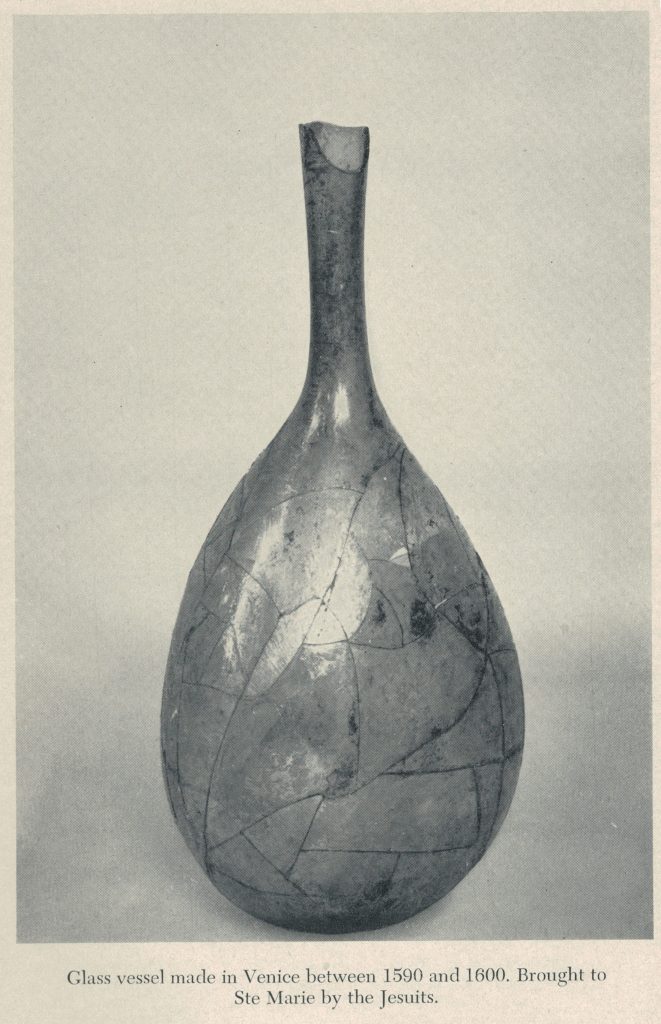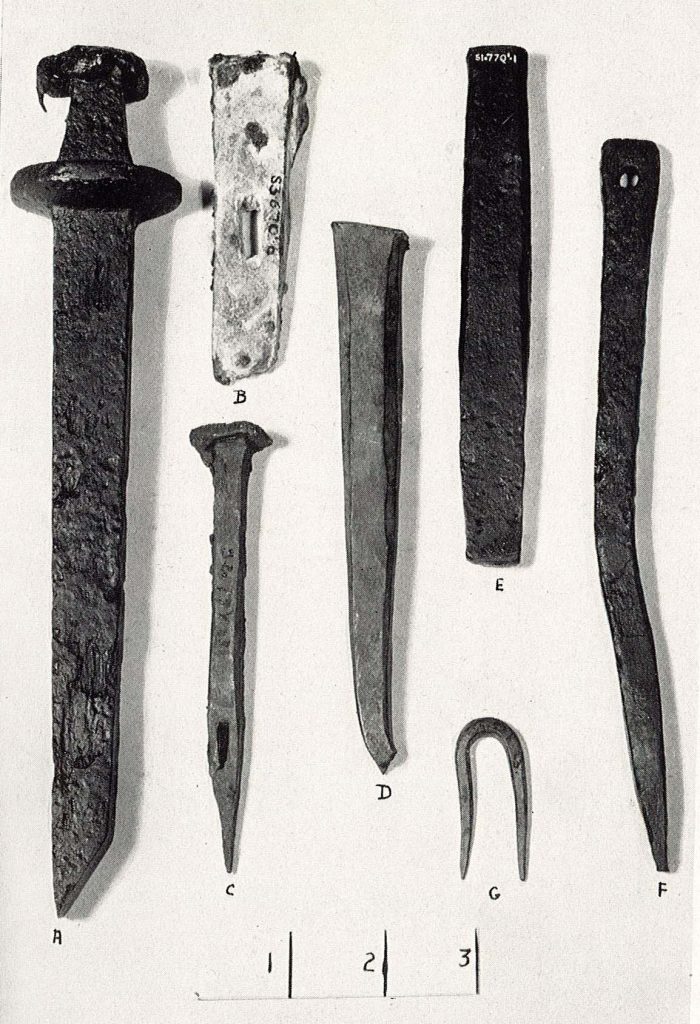Sainte Marie I Material Culture: Architecture & Artifacts
Archaeological work at the site revealed insights into early French-Canadian architecture although the details of any wooden superstructure were destroyed by fire. Fragments of cedar flooring survived in the excavated areas of bastions while small rectangular brick remains were also found in the area of the chimney, of the central fireplace, and of the chapel, representing the earliest brick fragments in Ontario.
Tens of thousands of artifacts were also recovered by Kidd and Jury that represent an outstanding assemblage for this period. These include iron goods (bells, axes with trade marks); a complete mason’s trowel, a complete copper plate, weaponry fragments including sword portions; spectacle lens, scissors, coins, a pre-1622 silver medallion, a rosary with silver wire and bone beads arranged in a cruciform pattern; and other religious ornamentation; mainly red but some blue glass beads; glass (complete bottles), tableware, hooks, eyes, and ornaments. The Indigenous assemblage includes pottery, many pipes including an anthropomorphic effigy; and bone and antler tools including an antler ladle, stone tools and even a large segment of woven textile which is probably a bag.



